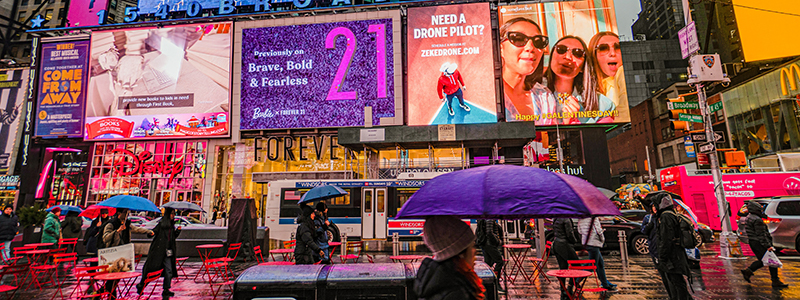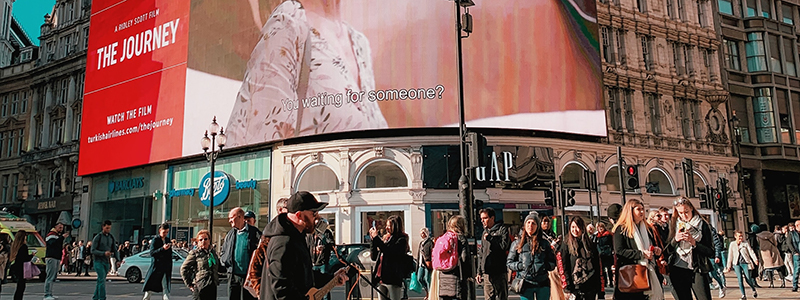Over the last 50 years, the marketing game has changed drastically, which has led to a major shift in the difference between traditional and digital marketing. It has closely followed developments in technology starting with print, then moving to radio, television, and now the Internet.
Because of all this change, some marketing practices are completely outdated, while others are more relevant than ever.
While there are many similarities between traditional marketing and digital marketing, there are a lot of differences, too. A modern strategy should focus on a mixture of things, so we’ll break down the different areas to focus on.

What is Traditional and Digital Marketing?
Before we get too deep, what is traditional and digital marketing?
Traditional marketing is using methods that have been around for a long time, and most include practices that pre-date the Internet, such as:
- Billboards
- Print ads (magazines, newspapers, etc.)
- Radio/TV commercials
Digital Marketing, on the other hand, is utilizing computers and the Internet to reach your customers. This can include:
- Search engine ads
- Social media ads
- Digital billboards
The most interesting thing to remember is that digital marketing doesn’t have to be online or on a computer. It can also be on billboards or other screens that can get more customized messages to customers while they’re out and about.
Key Differences Between Traditional and Digital Marketing
With the unwavering popularity of the Internet, this form of marketing has infiltrated our daily lives to an extent that no one could have ever predicted. Beginning on a single household computer, now every member of most families has multiple devices that connect them to the online world. From phones, to tablets, to laptops, the average person connects to the Internet multiple hours per day!
This has presented advertisers with an opportunity to reach their audience like never before, but it also presents significant challenges. In the industry, we call it ‘too much noise’ – and the basic concept is that people are being so over-marketed (especially online) that it’s hard to cut through all the noise to get your message across.
For example, social media advertising is slowly becoming a very lucrative and effective way to reach a wide audience. However, the popular platform of the moment seems to be constantly changing, and each has a specific target audience where marketers see the most impact.
Some social platforms require paying “influencers” for anyone to listen, while others rely on hyper-targeting to make sure your message is seen by the right person. That’s why it’s critical to go with expert help when making your marketing plan, and really understand the difference between traditional and digital marketing.

Traditional Still Reigns Supreme In Some Markets
While many companies have moved online for their advertising efforts, traditional efforts still reign supreme in some markets.
One good example, which is also the one we work on every single day, is billboard marketing in Puerto Rico. As anyone who has lived on or visited our wonderful island knows, traffic can be a major problem. Nobody likes traffic, it adds to a lengthy workday, and can be overwhelmingly frustrating just sitting in your car and not being able to move for long periods of time. While most would agree that there’s nothing really good about the traffic in Puerto Rico, the one major benefit comes in the exposure of billboards. The driver of a car should never be looking at their phone while operating a vehicle, so their only choice is to look out the windshield at what’s in front of them.
Strategic billboard placement in high traffic areas can be a very successful method of getting marketing messages across as drivers really have no choice, but to look at them.
Effective traditional marketing efforts are not limited just to billboards though, believe it or not there is still a large sector of the population that reads the newspaper every morning and orders magazines for their interests! While online has inevitably engulfed a large portion of these types of marketing mediums, for specific products usually targeting an older demographic, traditional print and other forms of marketing are still used often.
Similarities Between Traditional Marketing and Digital Marketing
There is a big similarity between digital and traditional: they’re both trying to reach your customers in the most useful way. Plus, when combined as a strategic marketing mix, they really can build off of each other.
In a world where people are exposed to nearly 5,000 advertisements every single day, cutting through the noise can be a very difficult endeavor. This is where strategy and creativity come into play which when combined produce some of the most beautiful and effective advertising. Appealing to people’s sense of humor or humility are common methods of getting a message across, but even being different and creative is no longer original enough to make an impact. What marketers are seeing these days is that volume and frequency of advertisements is one of the most effective ways to cut through the noise. Content marketing is a common tactic for companies to get their brand in front of people on a regular basis.
This is where the marriage between traditional and digital marketing comes into play. Advertisers must constantly remind their audience of their products and services, so the best way to do so is to get in front of them as often and in as many different ways as possible. Let’s revisit the example of outdoor media in Puerto Rico. If a driver is on their way to work and gets stuck in some traffic trying to get across San Juan, they will see a number of billboards along their way. At one particularly slow point, they notice a billboard for a beautiful new watch. They’ve been in the market for a watch for a few months now and this advertisement managed to catch their attention.

Now fast forward to the rest of this potential customer’s day. While they are at work, they decide to take a break during lunch and investigate some more information about the watch they noticed on the billboard during their drive. An effective web strategy would be able to capture this web visitor’s information, drop a cookie in their browser, and then show personalized ads to them on the web and social media for the watch they were looking at.
While the billboard may have sparked the initial interest in the product and caused the person to gather more information, it will be the persistent reminder of targeted Google advertisements in their web browser or ads showing up in their Facebook newsfeed that eventually lead to making a purchase decision.
Traditional vs Digital Billboards
We mentioned that billboards and other outdoor advertising can be extremely effective in the right markets, and it’s even more exciting when you add in the possibility of digital billboards. Whether a sign at a busy intersection, on the side of a bus, or placed inside of a building, there are plenty of options.
The only real downside to a traditional billboard is that you create one ad, and it shows to all people at all times of the day. Digital billboards completely solve this problem!
A digital billboard allows you to display one targeted ad during the morning commute, say, for airline tickets to an exotic vacation. That will put travel in the mind of the viewer while they’re sitting at their desk at work all day.
Then, during the evening rush hour, you can advertise a movie or a restaurant. People are in their cars thinking about evening entertainment, and this might make them change their plans.
In other words, the difference between traditional and digital marketing really blurs when you start factoring in digital billboards.

Cost of Digital Marketing vs Traditional
As a businessperson, you’re probably concerned with the bottom line. What’s the cost of digital marketing vs traditional?
The answer to this is exactly what you’d expect: it depends.
Just like it’s much more affordable to put an ad on page 7 of a small-town paper than a billboard in Times Square, some digital ads are cheaper than others. You can get social media ads virtually for free if there isn’t much competition, or you could pay top dollar to be high on the page in popular Google search.
Again, it really comes down to finding the right mix that will achieve your goals with your customers. If you’re not sure how this looks for you, please reach out to us. As the local leaders in outdoor media in Puerto Rico, we can make sure your business is reaching your audience.


 787 792 4113
787 792 4113

Leave a Reply
Want to join the discussion?Feel free to contribute!